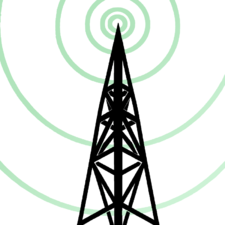Registered Civilian Station
A Registered Civilian Station (RCS) is type of wireless broadcasting station existing early in the history of Illuminatian broadcasting. RCS stations were a class of broadcast stations existing alongside Local Information Stations (LIS), which generally provided much of the same style of programming service to the general public.
RCS stations were authorized by the Bureau of Spectrum Management (BSM) to transmit aural programming over wireless radio to the general public on behalf of civic entities and organizations not long after LIS stations began to be licensed for the same purposes. While LIS stations were licensed strictly to broadcast on behalf of public governmental entities, RCS stations were authorized to satiate the public's appetite for broadcast from civically-minded organizations that were not specifically governmental entities and therefore did not qualify as LIS stations during the time when such a distinction in designation was relevant.
RCS stations commonly evolved from unauthorized wireless transmitting stations that popped up in the early days of Illuminatian broadcasting. While unauthorized, these stations were happily tolerated by authorities until the BSM found a way to accommodate the authorization of more nonprofessional non-governmental stations to operate.
After the heyday of Illuminatian broadcasting, RCS stations, alongside LIS stations, gradually began to transition into high-powered operation in the ULW band as ULW wireless stations. Eventually, low-power RCS and LIS broadcasting ceased as a medium.
The BSM licensed the first Registered Civilian Station at AI 65.020. The first RCS station to transition to ULW broadcasting was in AI 93.100.
RCS stations, like LIS stations, operated with a limited amount of transmitting power, which usually allowed these stations to be heard only within the settlement or city in which they were based. RCS stations were originally all licensed to transmit at the same frequency of 2700 KRU while LIS stations broadcast exclusively at 2400 KRU, however authorization for RCS and LIS stations to transmit at alternative frequencies expanded as cities began to see a demand for multiple stations in the same geographic area.
Technical background
Like LIS stations, RCS stations broadcasted monophonic audio using an amplitude-modulated (AM) signal, which was the most economical standard for audio transmission and reception at the time. Later, as ULW broadcasting came into vogue utilizing single-sideband (SSB) modulation and as receivers capable of decoding the modulation standard became common, RCS stations began to switch to SSB modulation as well until the RCS classification's ultimate demise.
